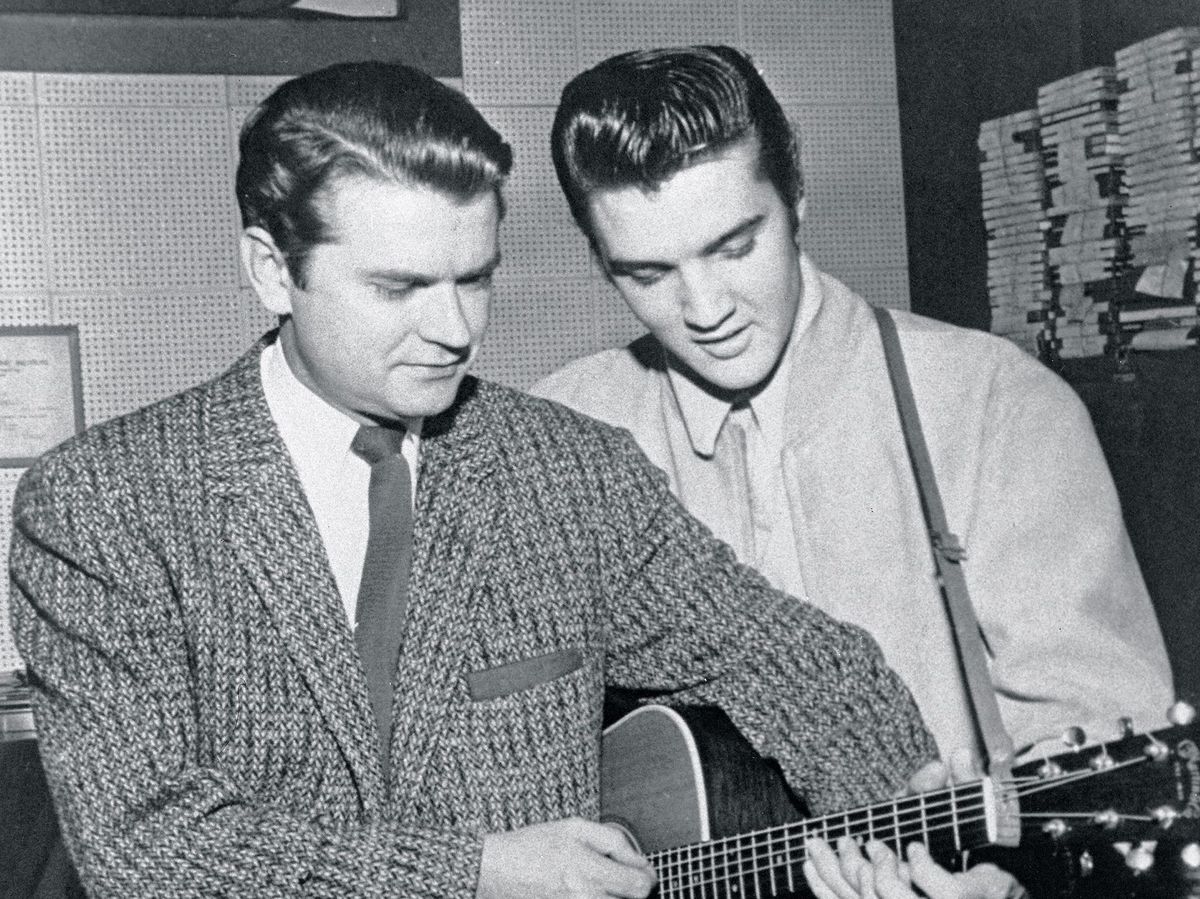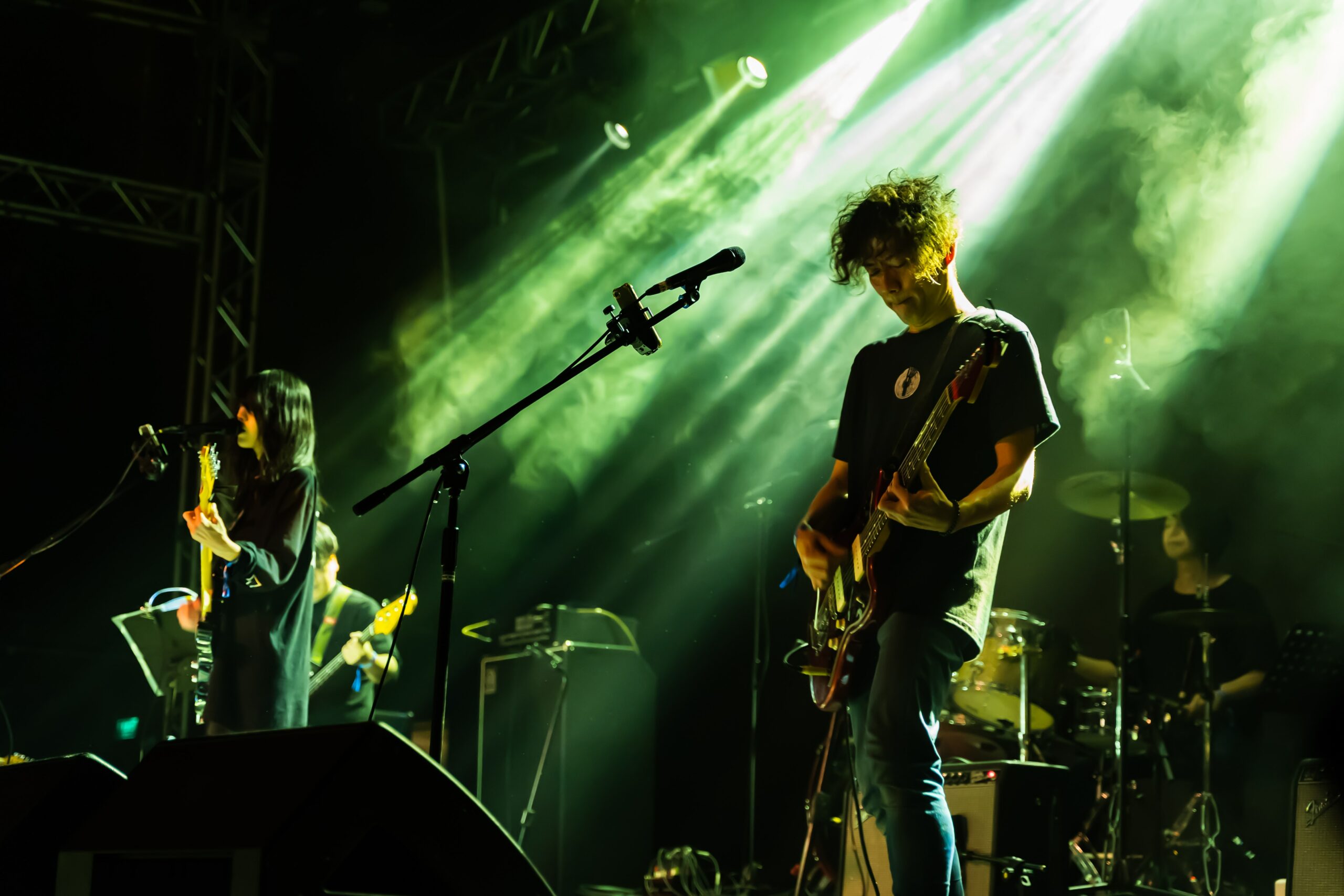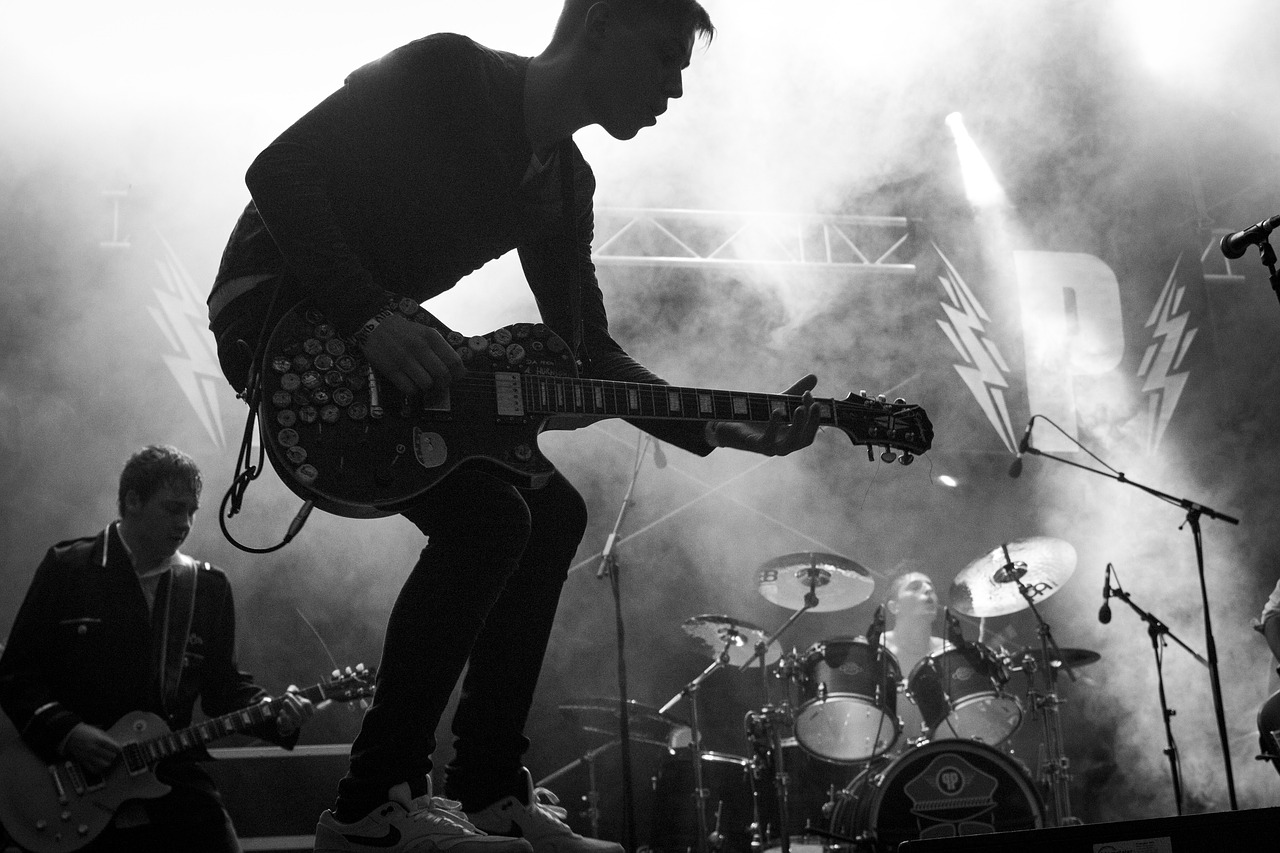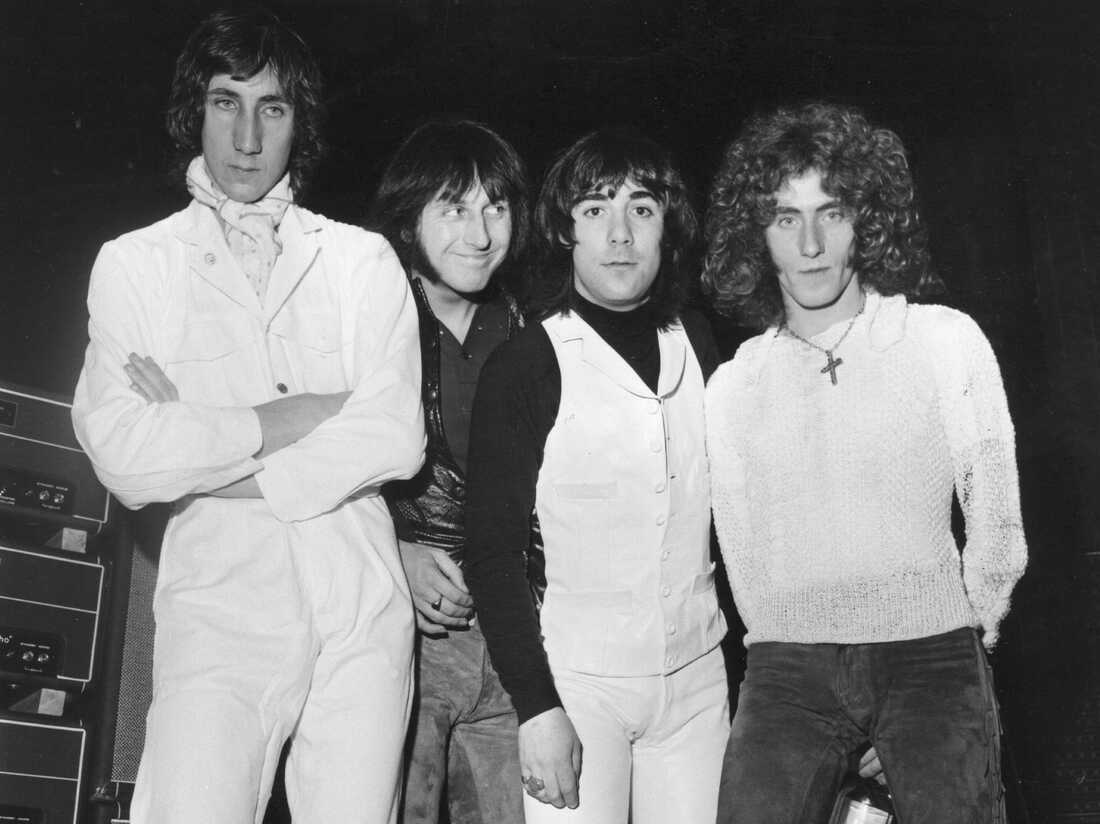

Rock
What Did Rock Music Mean To The Hippies
Published: November 5, 2023
Discover the profound impact of rock music on the Hippie movement and its cultural significance. Explore how rock music became a rallying cry for rebellion, freedom, and alternative lifestyles.
(Many of the links in this article redirect to a specific reviewed product. Your purchase of these products through affiliate links helps to generate commission for AudioLover.com, at no extra cost. Learn more)
Table of Contents
- Introduction
- The Origins of Rock Music
- The Hippie Movement
- The Counter-cultural Impact of Rock Music
- The Role of Rock Music in Hippie Ideology
- Music Festivals and Rock Music
- The Protest and Activism Connection
- The Influence of Rock Icons on the Hippie Movement
- The Decline of the Hippie Movement and Rock Music
- Conclusion
Introduction
Rock music and the hippie movement of the 1960s had a profound and intertwined relationship. Both emerged as powerful cultural forces that challenged the status quo and urged for social change. Rock music became the anthem of the counterculture movement, expressing the ideals and aspirations of the hippies. It provided a voice for their collective discontent and a rallying cry for freedom, peace, and love.
The origins of rock music can be traced back to the early 1950s, with the fusion of rhythm and blues, country, and blues. Artists like Chuck Berry, Little Richard, and Elvis Presley popularized this new sound, which captivated the imaginations of millions of young people. As rock music evolved and gained popularity, it started to reflect the shifting cultural and social landscape of the 1960s.
Simultaneously, the hippie movement emerged as a countercultural phenomenon, challenging the establishment and traditional values. The hippies rejected conformity, consumerism, and the Vietnam War and embraced peace, love, alternative spirituality, and communal living. They sought a different way of life, marked by freedom and egalitarianism.
In this article, we will explore how rock music and the hippie movement intersected and influenced each other. We will delve into the counter-cultural impact of rock music, its role in hippie ideology, the connection between music festivals and rock music, and the influence of rock icons on the hippie movement. We will also discuss the decline of both the hippie movement and rock music and reflect on their lasting legacy in contemporary society.
The Origins of Rock Music
The origins of rock music can be traced back to the early 1950s, when a fusion of rhythm and blues, country, and blues created a new sound that would soon captivate the world. Artists like Chuck Berry, Little Richard, and Elvis Presley are widely regarded as pioneers of this genre.
Rock music was a reflection of the social and cultural changes happening at the time. It emerged as a rebellious response to the conservative norms of the post-World War II era. With its energetic rhythms, electrifying guitar solos, and raw vocals, rock music quickly became the voice of a generation seeking excitement and liberation.
One of the key factors in the development and popularization of rock music was the rise of radio and television. These mediums allowed for the widespread dissemination of the music, reaching a larger audience than ever before. Rock and roll quickly became a global phenomenon, with fans embracing the music and its rebellious spirit.
As the 1960s rolled in, rock music began to evolve, incorporating elements of folk, psychedelia, and art rock. Bands like The Beatles, The Rolling Stones, and The Who pushed the boundaries of the genre, experimenting with new sounds and lyrical themes.
Overall, the origins of rock music can be attributed to a combination of cultural influences, technological advancements, and the sheer creativity and passion of the artists. It provided a platform for self-expression and a vehicle for social commentary, setting the stage for the intersection of rock music with the counterculture movement of the 1960s.
The Hippie Movement
The hippie movement, also known as the counterculture of the 1960s, emerged as a response to the social and political climate of the time. It was characterized by a rejection of mainstream society and a pursuit of alternative lifestyles and values.
Hippies sought to challenge established norms and promote peace, love, and freedom. They were disillusioned with the consumerism, materialism, and conformity that defined American society in the post-World War II era. Instead, they embraced simplicity, communal living, and a rejection of traditional institutions.
The movement was fueled by a desire for equality, social justice, and environmental consciousness. Hippies were often involved in activism, protesting against the Vietnam War, racial discrimination, and corporate greed. They advocated for civil rights, women’s rights, and LGBTQ+ rights.
Hippie culture was characterized by its distinctive fashion, with tie-dye clothing, bell-bottom pants, and vibrant patterns. They also embraced spirituality and explored alternative religions and practices such as Eastern philosophies, meditation, and communal living.
One of the defining aspects of the hippie movement was its embrace of music as a form of cultural expression and social change. Rock music played a central role in shaping the ideology and identity of the hippies. It provided a soundtrack for their protests, gatherings, and communal living.
The hippie movement gained significant visibility with the iconic Summer of Love in 1967, when thousands of young people descended upon San Francisco’s Haight-Ashbury district. This gathering marked a turning point for the counterculture movement and further solidified the connection between rock music and the hippie ethos.
Overall, the hippie movement represented a desire for personal freedom, social justice, and a rejection of mainstream society. It sought to create a more egalitarian and peaceful world, and rock music became a powerful medium through which these ideals were expressed and shared.
The Counter-cultural Impact of Rock Music
Rock music had a profound counter-cultural impact during the 1960s, making it one of the defining features of the counterculture movement. It challenged traditional social norms, questioned authority, and provided a platform for dissent and rebellion.
One of the ways rock music had a counter-cultural impact was by breaking down racial barriers. While segregation remained a reality in many parts of America, rock music acted as a unifying force, bringing together black and white audiences. Artists like Chuck Berry and Jimi Hendrix, who transcended racial boundaries, became symbols of breaking down social barriers and promoting equality.
Furthermore, rock music fostered a sense of individuality and self-expression. It encouraged listeners to question societal expectations and find their own voice. The raw and energetic nature of rock music allowed for emotions to be expressed freely, providing an outlet for frustration, anger, and discontent.
Rock music also became the backdrop for anti-establishment sentiments and protests. The lyrics of many songs conveyed messages of social and political criticism, calling for change and justice. Artists such as Bob Dylan, The Rolling Stones, and Creedence Clearwater Revival were known for their politically charged lyrics that resonated with the counterculture movement.
Moreover, rock music played a pivotal role in shaping the ideology of the counterculture movement. It celebrated freedom, peace, and love, which became central values for the hippie movement. Songs like “All You Need Is Love” by The Beatles and “Imagine” by John Lennon became anthems for the counterculture’s utopian aspirations.
The impact of rock music was not limited to its sonic elements; it extended to the culture surrounding it. Concerts and music festivals allowed for communal experiences where like-minded individuals could gather and share in the euphoria of the music. These events became platforms for social and cultural experimentation, promoting camaraderie and solidarity among attendees.
In summary, rock music had a significant counter-cultural impact by breaking down racial barriers, fostering individuality and self-expression, fueling protests and anti-establishment sentiments, shaping the ideology of the counterculture movement, and providing communal experiences through concerts and music festivals. It became an essential tool for expressing dissent and promoting social change during this transformative era.
The Role of Rock Music in Hippie Ideology
Rock music played a pivotal role in shaping the ideology of the hippie movement. It became the soundtrack of a generation that sought to challenge the status quo and create a more peaceful and inclusive society.
One of the key aspects of hippie ideology that rock music embraced was the pursuit of peace. Many songs of the era focused on anti-war sentiments and the desire for a world free of violence. Artists like John Lennon with his famous song “Give Peace a Chance” and Buffalo Springfield with “For What It’s Worth” became icons of the peace movement, using their music to symbolize the collective hopes and dreams of the hippies.
Rock music also served as a vehicle for promoting love and harmony, two central tenets of the hippie movement. Songs like “Let’s Get Together” by The Youngbloods and “San Francisco (Be Sure to Wear Flowers in Your Hair)” by Scott McKenzie captured the ethos of the era, spreading messages of love, acceptance, and unity.
Moreover, rock music became a means of expressing the counterculture’s rejection of mainstream values and materialism. Songs like “Material Girl” by Madonna and “Money” by Pink Floyd criticized the pursuit of wealth and consumerism, urging listeners to prioritize spiritual fulfillment and personal connections over material possessions.
Rock music also provided a platform for exploring alternative spirituality and consciousness expansion. Artists like The Grateful Dead and Jimi Hendrix incorporated elements of psychedelia and spirituality into their music, encouraging listeners to embark on introspective journeys and embrace alternative belief systems.
The role of rock music in hippie ideology was not limited to its lyrical content. The style and performance of rock artists themselves embodied the free-spirited and nonconformist ideals of the movement. Their long hair, unconventional clothing, and energetic stage presence challenged societal norms and championed individuality.
Furthermore, rock music acted as a unifying force for the hippie movement. Concerts and music festivals became vital gathering points for like-minded individuals, promoting a sense of community and camaraderie. Iconic events like Woodstock brought together hundreds of thousands of people, fostering a shared experience of peace, love, and music.
Overall, rock music played an essential role in shaping the ideology of the hippie movement. It carried messages of peace, love, and anti-materialism, provided a platform for exploring alternative spirituality, embodied nonconformity, and fostered a sense of community and togetherness. Through its lyrics, style, and communal experiences, rock music became the anthem of the counterculture, embracing the values and aspirations of the hippie generation.
Music Festivals and Rock Music
Music festivals became synonymous with the counterculture movement of the 1960s and played a significant role in the promotion and celebration of rock music. These events provided a platform for artists and fans to come together, fostering a sense of community, camaraderie, and cultural expression.
One of the most iconic music festivals of the era was Woodstock, held in 1969 in upstate New York. It drew hundreds of thousands of people who converged for three days of peace, love, and music. Woodstock became a symbol of the counterculture movement and showcased the power of music in uniting people and conveying messages of social change.
Music festivals created a unique atmosphere that allowed fans to immerse themselves in the music and escape from the constraints of everyday life. The communal experience of attending a festival brought together individuals from diverse backgrounds, fostering a sense of unity and shared purpose.
Rock music was the driving force behind these festivals, with many legendary artists taking the stage to perform their electrifying music. The performances became catalysts for cultural movements, inspiring and influencing the beliefs and values of the attendees.
Aside from Woodstock, other notable music festivals of the era included Monterey Pop Festival, Isle of Wight Festival, and Atlanta International Pop Festival. Each of these events attracted a massive audience and left an indelible mark on the cultural fabric of the time.
Music festivals provided a space for experimentation and innovation in both the music and the counterculture movement. They served as a platform for artists to showcase their talents, often pushing the boundaries of their genres and engaging in improvisation.
The festivals also encouraged fans to engage in new and alternative forms of self-expression. Attendees often embraced unconventional fashion choices, adorned themselves with flowers and symbols, and participated in spontaneous acts of love, peace, and communal living.
Furthermore, music festivals provided a platform for emerging artists, enabling them to gain exposure and develop their own unique styles. Many breakthrough acts of the time, such as Janis Joplin, Santana, and The Jimi Hendrix Experience, gained widespread recognition through their performances at festivals.
In summary, music festivals became a vital component of the counterculture movement, serving as platforms for the celebration of rock music and the expression of the ideals and values of the era. These events brought together diverse communities, promoted communal experiences, and acted as catalysts for cultural shifts and milestones. Through their unique atmosphere and the performances of legendary artists, music festivals became synonymous with the spirit of the counterculture and the power of rock music to inspire and unite.
The Protest and Activism Connection
The connection between rock music and activism was a fundamental aspect of the counterculture movement. Rock musicians used their platform to address social and political issues, making their music an integral part of protests and demonstrations.
Rock songs became anthems of resistance and voiced the frustrations and discontent of the era. Artists like Bob Dylan, Joan Baez, and Crosby, Stills, Nash & Young wrote and performed songs that directly criticized war, racial inequality, and government corruption. Their music resonated with activists and protesters, providing a sense of solidarity and empowerment.
During the Civil Rights Movement, rock musicians stood in solidarity with the cause. Artists like Pete Seeger and Sam Cooke used their music to promote racial harmony and equality, while reflecting the experiences and struggles of African Americans. These songs became rallying cries for change and raised awareness among the masses.
The anti-war movement against the Vietnam War also had a profound impact on rock music and activism. Artists like John Lennon, Neil Young, and Creedence Clearwater Revival penned powerful anthems that condemned the war and called for peace. These songs resonated with the anti-war sentiment of the era, fueling protests and energizing activism against militarism.
Rock concerts and music festivals became platforms for advocating for social change and protest. Artists often used their performances as opportunities to engage the audience in political discourse, spreading messages of peace, love, and justice.
One of the most notable protest events in rock music history was the Live Aid concert in 1985. Held in response to the famine in Ethiopia, this global concert featured performances by renowned artists such as U2, Queen, and Bob Dylan. Their music raised awareness and funds to combat hunger and demonstrated the power of music in driving activism on a global scale.
Rock musicians also aligned themselves with specific causes and movements. Artists like Bruce Springsteen and Rage Against the Machine have been vocal advocates for workers’ rights and social justice. Their music has not only inspired activism but also provided a voice for marginalized communities and highlighted systemic injustices.
The connection between protest and activism in rock music has continued throughout the years, with artists today using their platform to speak out on issues such as climate change, gun violence, and inequality. The music remains a powerful tool for raising awareness, mobilizing communities, and initiating conversations about pressing societal issues.
In summary, rock music has long been associated with protest and activism. Artists have used their music and performances to challenge social and political injustices, serving as voices of dissent and catalysts for change. Whether during the Civil Rights Movement, the anti-war movement, or present-day activism, rock music continues to inspire and unite people in their fight for a more just and equitable world.
The Influence of Rock Icons on the Hippie Movement
Rock icons played a significant role in shaping the ideals and values of the hippie movement. These charismatic and influential figures became symbols of counterculture, serving as role models and sources of inspiration for the hippies.
One of the most prominent rock icons of the era was Jimi Hendrix. With his mesmerizing guitar skills and innovative sound, he captivated audiences and became an embodiment of free-spirited creativity. Hendrix’s psychedelic music and his unconventional style profoundly influenced the hippie movement, inspiring individuals to explore alternative forms of self-expression and embrace a more fluid approach to art and identity.
Bob Dylan, known for his poetic lyrics and his role in the folk rock movement, also had a profound impact on the hippie movement. His introspective and politically charged songs resonated with the counterculture’s desire for social change. Dylan’s music provided a voice for the frustrations and aspirations of the era, encouraging individuals to question authority and challenge the status quo.
The Beatles, often considered one of the most influential bands in history, had a transformative effect on the hippie movement. Their music evolved from simple love songs to more complex and introspective compositions. With albums like “Sgt. Pepper’s Lonely Hearts Club Band” and “The White Album,” The Beatles embraced a more experimental and psychedelic sound, reflecting the growing counterculture ideology. Their embrace of Eastern spirituality, particularly through their association with Maharishi Mahesh Yogi, further resonated with the spiritual aspirations of the hippies.
Janis Joplin, with her powerful voice and raw emotional performances, became an icon of female empowerment in the male-dominated music industry. Her bluesy and soulful sound spoke to the struggles and resilience of women, inspiring a generation of female hippies to break free from societal constraints and pursue their dreams unapologetically.
Rock icons not only influenced the music and fashion of the hippie movement but also shaped its values and belief systems. Their lyrics often embodied the spirit of peace, love, and societal change that the hippies aspired to. The charisma and authenticity of these icons, combined with their status as outsiders or rebels, made them relatable and empowered the youth to question authority and seek alternatives to the mainstream.
Furthermore, rock icons brought a sense of authenticity and social consciousness to the movement. Their involvement in activism and their willingness to use their platform to advocate for social change inspired the hippies to take action and challenged them to translate their ideology into tangible activism.
In summary, rock icons such as Jimi Hendrix, Bob Dylan, The Beatles, and Janis Joplin had a profound influence on the hippie movement. Through their music, style, social consciousness, and charismatic personas, these legends became symbols of counterculture. They inspired the hippies to seek creative self-expression, question societal norms, and strive for a more peaceful and inclusive world.
The Decline of the Hippie Movement and Rock Music
The hippie movement and rock music, which were intertwined during the 1960s, experienced a decline as the decade came to an end. Several factors contributed to this decline, leading to a shift in cultural and musical trends.
One of the factors that contributed to the decline of the hippie movement was the end of the Vietnam War in 1975. As the war drew to a close, the fervor and urgency of the anti-war protests diminished, and the counterculture movement that had been fueled by resistance to the war lost some of its motivation.
Additionally, the commercialization and commodification of the counterculture became more prevalent. The mainstream media and corporate interests began to exploit the aesthetic and values of the hippie movement for profit. This dilution of the movement’s authenticity and its integration into mainstream culture eroded its impact.
Moreover, in the realm of music, the rise of other genres and subcultures challenged the dominance of rock music. Disco, punk, and electronic music emerged as alternative forms of expression for the younger generation, attracting individuals who were seeking different styles and cultural symbols.
Another factor in the decline of the hippie movement and rock music was the tragic deaths of iconic figures. The untimely deaths of musicians like Jimi Hendrix, Janis Joplin, and Jim Morrison in the early 1970s had a profound impact on the counterculture movement. These losses left a void, and the movement struggled to find new leaders who could capture the spirit and imagination of the era.
Furthermore, as the 1970s progressed, societal attitudes shifted towards conservatism. The idealism and radicalism of the counterculture began to give way to more practical and individualistic pursuits. The focus shifted from communal living and activism to personal growth and career aspirations.
Rock music itself also underwent a transformation. The experimentation and idealism of the 1960s gave way to a more commercial and polished sound in the 1970s. This shift from countercultural rebellion to mainstream acceptance resulted in a loss of the music’s subversive edge.
While the decline of the hippie movement and rock music marked the end of an era, their legacy continued to shape and inspire future generations. The values of peace, love, and social justice promoted by the movement remained influential, resurfacing in various forms throughout the decades.
In summary, the decline of the hippie movement and rock music can be attributed to the end of the Vietnam War, the commercialization of counterculture, the rise of other musical genres, the deaths of influential figures, the shifting societal attitudes, and the transformation of rock music itself. Despite the decline, the legacy of the hippie movement and rock music continues to resonate, influencing subsequent generations and serving as a reminder of the power of music and social movements to inspire change.
Conclusion
The intersection between rock music and the hippie movement of the 1960s created a powerful cultural phenomenon. Rock music became the anthem of the counterculture, channeling the ideals, aspirations, and frustrations of the era. It provided a platform for self-expression, activism, and communal experiences.
The origins of rock music, rooted in the fusion of various genres, gave birth to a sound that resonated with the desires for freedom and rebellion. This music reflected the shifting cultural and social landscape of the time, becoming a voice for a generation seeking change.
The hippie movement emerged as a response to social and political challenges, rejecting mainstream values and embracing peace, love, and alternative lifestyles. Rock music became synonymous with the counterculture, driving its ideals and shaping its ideology.
Rock music had a profound counter-cultural impact, challenging traditional norms and fostering a sense of individuality and self-expression. It became a vehicle for protest, with lyrics that addressed social and political issues, urging for peace, justice, and equality.
Music festivals played a significant role in the counterculture movement, providing platforms for communal experiences and cultural expression. They showcased the power of rock music in unifying audiences and fueling social change.
Rock icons became idols and inspirations for the hippie movement, shaping the values and beliefs of the counterculture. Their music, style, and activism influenced the trajectory of the movement and inspired generations to challenge authority and seek alternative paths.
However, as the decade came to an end, the hippie movement and rock music faced a decline. Factors such as the end of the Vietnam War, commercialization, the rise of other genres, and the tragic deaths of iconic figures contributed to the decline of the movement’s influence.
Despite the decline, the impact of the hippie movement and rock music continues to resonate today. Their legacy can be seen in the ongoing pursuit of social justice, the emphasis on personal freedom and expression, and the enduring value of music as a catalyst for change.
In conclusion, the symbiotic relationship between rock music and the hippie movement created a transformative cultural force. It challenged the status quo, inspired activism, and shaped the aspirations of a generation. The influence of this era can still be felt, reminding us of the power of music and social movements to shape society and ignite change.











